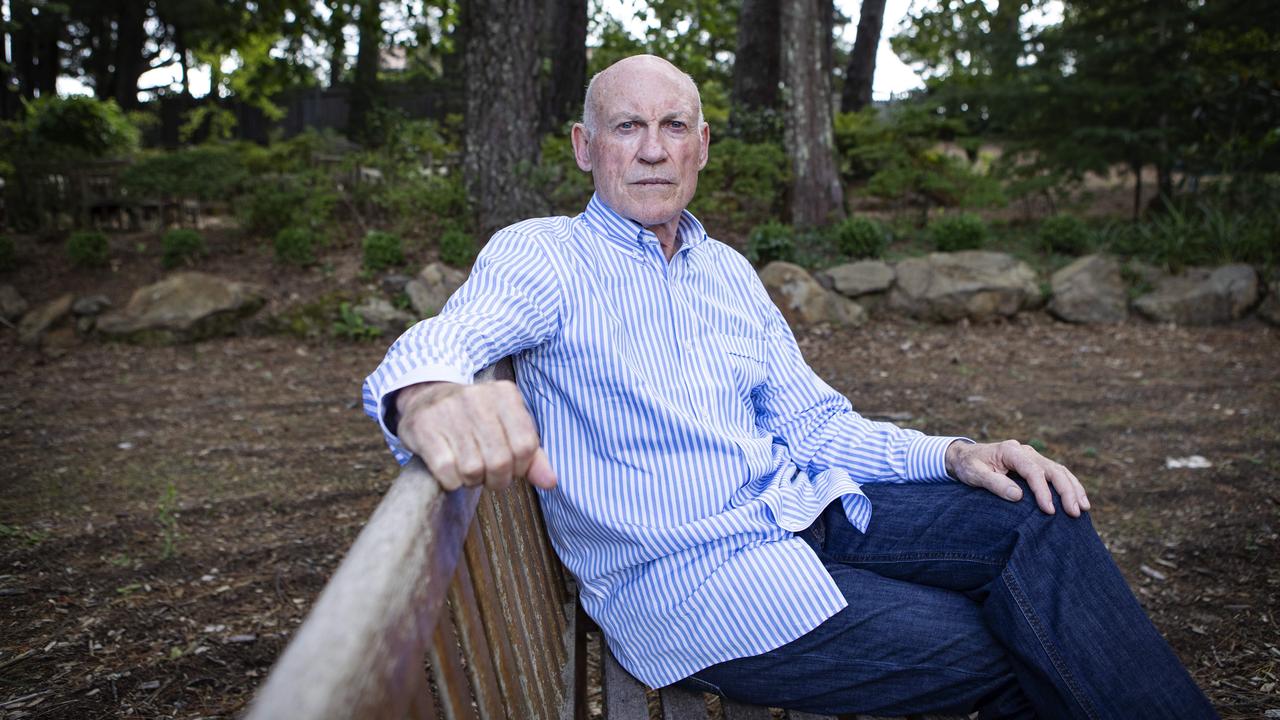Thanks to Mike Carlton, horse has far from bolted on reform of 18c
AFTER Tony Abbott’s backdown on reform of section 18C of the Racial Discrimination Act, all might have seemed to be lost.

AFTER Tony Abbott’s backdown on reform of section 18C of the Racial Discrimination Act, all might have seemed to be lost.
Then along came Mike Carlton and his anti-Semitic mates at The Sydney Morning Herald. With any luck, the proceedings launched against them this week might turn Carlton into the reluctant vehicle for reform of this odious provision.
Carlton and the SMH now find themselves in a very strange position. If they surrender and settle, they will be affirming what their critics have been saying about the nature of their coverage of the Arab-Israeli conflict.
But if they fight hard — and let’s hope they do — they will be making it possible for the courts to undertake the reform process that has just been squibbed by Abbott.
The case against Carlton offers the tantalising possibility of undoing the damage done by Mordecai Bromberg’s 2011 judgment against Herald-Sun columnist Andrew Bolt.
Carlton and the SMH now have a very strong incentive to use exactly the same argument that was run unsuccessfully by Bolt: judge them by the standards of the community, not the standards of those who say they have been offended, insulted, humiliated or intimidated.
If they succeed, Australian legal history will remember Carlton as the man who took up the fight that was started by Bolt. They will be locked together forever as the catalysts for reform — a prospect unlikely to bring either much joy.
Bromberg was the last Federal Court judge called upon to apply section 18C. He did so in a way that he clearly believed was required by the words of the statute. That led to Bolt’s articles on light-skinned Aborigines being declared unlawful. There has never been any suggestion Bromberg was anything but sincere in his belief that he was applying the law in the proper way.
The only problem is he seems to have used the wrong test for liability. Wrong, but honestly so.
Before examining how Bromberg botched things, it’s important to consider the consequences of his mistake. The first is that the Bolt case was wrongly decided — not on the facts, but on the law. That might be cold comfort for Bolt, who continues to be vilified over articles that, at their core, argued against making public policy on the basis of race.
The second consequence is the one with current impact. If Carlton and the SMH mount a determined defence, it increases the likelihood that Bromberg’s mistake will be revealed for what it is: an embarrassing deviation from orthodox concepts of fairness.
The question of whether Carlton and the SMH win in court is almost irrelevant. The real issue is which test for liability is used by the courts to reach their decision.
Anyone who cares to read Bromberg’s judgment will see that the judge believed section 18C required him to decide whether Bolt’s articles were unlawful by considering them from the perspective of a reasonable representative of those before him who were arguing that the articles were, in fact, unlawful.
Most of the debate about the government’s now abandoned reform plan for section 18C focused on the fact that this provision is directed at speech on the subject of race that offends, insults, humiliates or intimidates.
Less attention was given to the core of the reform plan — the test for liability, which is the area where Bromberg and the legal mainstream seem to have parted company.
The reform plan would have ensured that any judge applying the replacement provision for section 18C would have had no choice but to decide liability by drawing upon community standards — not the standards of some notional representative of those complaining.
It would have required liability to be determined “by the standards of an ordinary reasonable member of the Australian community, not by the standards of any particular group within the Australian community”.
The contrast with the Bromberg approach is sharp. But this part of the reform plan seems right in line with a view expressed — before the reform plan was unveiled — by none other than federal Labor’s legal affairs spokesman Mark Dreyfus.
On March 16, Dreyfus appeared on the Australian Agenda program on the Sky News channel, where he was interviewed about section 18C by Paul Kelly, Peter van Onselen and myself.
Before entering parliament, Dreyfus was a highly regarded Melbourne silk. He still is. When it comes to technical knowledge of the law, his assessments deserve to be taken seriously.
So what are we to make of the fact that the transcript of that program gives rise to a clear impression that Dreyfus believed the main thrust of court decisions on section 18C favoured community standards as the touchstone for liability?
And, remember, Dreyfus was speaking before
Attorney-General George Brandis unveiled his reform plan on March 25. As it turned out, Brandis put forward the very test for liability that Dreyfus believed was already the cornerstone of the judicial application of section 18C.
If Dreyfus was right on March 16, he must still be right.
The reform plan would have put things beyond doubt, but the Dreyfus assessment suggests that the core of the Brandis plan — community standards — will still be applied by the court that deals with Carlton and the SMH — just so long as it’s not Bromberg’s court.
Here’s what the transcript from Australian Agenda says:
“Merritt: Let’s see what Labor would do. Are you happy with a provision like this that doesn’t take account of community standards? In the Bolt case, the judge in that decision explicitly rejected the argument that what you can say on the issue of race should be determined by community standards. Are you happy with that?
Dreyfus: I don’t think that is a correct reading of the judgment at all. I think all your viewers should go and read the multiple judgments of the Federal Court including the Federal Court judgment in the Bolt case ... It’s judged by an objective standard from the point of view of the reasonable member of the community.
Merritt: I disagree with you there. I think para 243 of the judgment of Bromberg J actually rejects explicitly community standards and makes it very clear that the test for liability will be from the perspective of those complaining.
Dreyfus: Well, I’m referring to all of the judgments, Chris, that have been given by the Federal Court judges over the years ... When we are considering this kind of legislative provision we have to read all of the judgments of the Federal Court judges who have looked at this and also bear in mind that it is only serious cases which end up in court ...”
For the sake of completeness, it is worth pointing out that Bromberg’s reasons for rejecting community standards are contained in a passage that starts at paragraph 243 and concludes at paragraph 253.
This is the same passage in which Bromberg makes the now-notorious observation: “Further, to import community standards into the test of the reasonable likelihood of offence runs the risk of reinforcing the prevailing level of prejudice.”
If there is any passage of case law that deserves to be torn up and discarded, this is it. It suggests that Australians, on the whole, are racially prejudiced and their standards are flawed.
If the politicians are content to allow this to remain unchallenged, the task of reform now falls to the judiciary.



